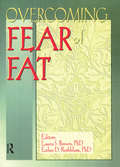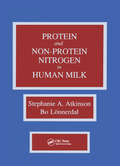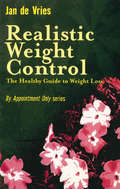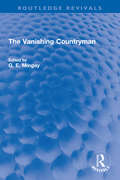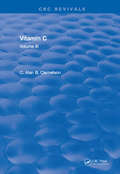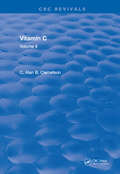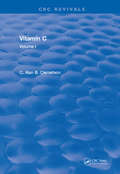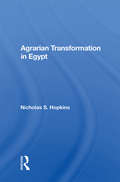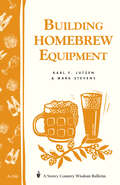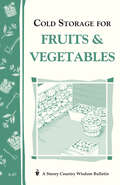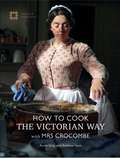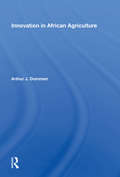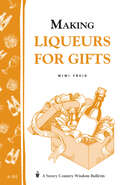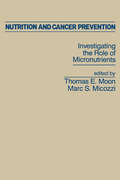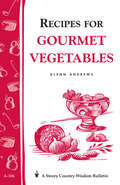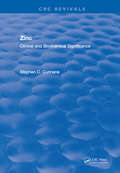- Table View
- List View
Overcoming Fear of Fat
by Esther D Rothblum Laura BrownHere is an enlightening new volume that presents an integration of anti-fat-oppressive attitudes into the work of feminist therapy. Overcoming Fear of Fat is unique among professional work in the area of women and fat in that it does not approach size as the problem; rather it approaches prejudice against fat as the problem. Although for nearly a decade, fat activists have been raising the issues that are confronted in this book, therapists, including feminist therapists, have been colluding with their clients in pathologizing fat, celebrating weight loss, and failing to adequately challenge cultural stereotypes of attractiveness for women, instead of empowering clients and encouraging them to take on expert authority about their own experiences. The contributors, including therapists and fat activists, aim to disconnect the issues of food intake and eating disorders from those of weight. They share personal and professional experiences of challenging fat oppression, offer strategies for therapists to rid themselves and their clients of fat oppressive attitudes, and most importantly, they confront long-held cultural myths that fat is unhealthy, and that fat women are physically unfit and are in hiding from their sexuality or personal power. A practical and informative resource for therapists, especially those who work with fat women or who themselves struggle with issues of feeling critical of their own body size, Overcoming Fear of Fat will also be a valuable guide for fat women who wish to feel supported in their struggle for self-worth and respect.
Proteins and Non-protein Nitrogen in Human Milk
by Stephanie Atkinson Bo LonnerdalFor the first time, an entire publication has been dedicated to providing a critical review of the identification and analysis of the milk specific proteins such as lactalbumin, lactoferrin and casein; the non-milk specific proteins such as plasma and membrane proteins; and the minor nitrogen-containing components such as enzymes, hormones, and growth factors. Biological roles, whether nutritional, endocrinological or immunological, of the specific nitrogen compounds in mammary milk production and/or growth and development of the breast-fed infant are also presented. Identification of the molecular weight compounds that have led to questions about their function in milk and their inclusion in modern infant formulas is thoroughly discussed and of great value to scientists in sub-specialties of biochemistry, nutrition, physiology and immunology, as well as to pediatric practitioners with primary interests in the infant food industry, academia, or clinical nutrition. The thoroughness of each chapter, often providing an historical panorama of the specific aspect of milk composition, makes this book useful for both the uninitiated and expert audiences who are interested in advancing their knowledge of human milk biochemistry and its physiological significance to the recipient infant.
Proteins and Non-protein Nitrogen in Human Milk
by Stephanie Atkinson Bo LonnerdalFor the first time, an entire publication has been dedicated to providing a critical review of the identification and analysis of the milk specific proteins such as lactalbumin, lactoferrin and casein; the non-milk specific proteins such as plasma and membrane proteins; and the minor nitrogen-containing components such as enzymes, hormones, and growth factors. Biological roles, whether nutritional, endocrinological or immunological, of the specific nitrogen compounds in mammary milk production and/or growth and development of the breast-fed infant are also presented. Identification of the molecular weight compounds that have led to questions about their function in milk and their inclusion in modern infant formulas is thoroughly discussed and of great value to scientists in sub-specialties of biochemistry, nutrition, physiology and immunology, as well as to pediatric practitioners with primary interests in the infant food industry, academia, or clinical nutrition. The thoroughness of each chapter, often providing an historical panorama of the specific aspect of milk composition, makes this book useful for both the uninitiated and expert audiences who are interested in advancing their knowledge of human milk biochemistry and its physiological significance to the recipient infant.
Realistic Weight Control: The Healthy Guide to Weight Loss (By Appointment Only Ser.)
by Jan De VriesWhatever you might call it - being overweight or corpulent or carrying excess fat - one thing is certain: obesity is one of the major problems of the developed world today. It is not simply a matter of being too fat: those who are severely overweight are prone to a tremendous range of other health problems such as back pain and coronary heart disease. In Realistic Weight Control Jan de Vries clearly and sensibly explains why these problems occur and how best to avoid them. Moreover, in view of the overwhelming variety of slimming methods on the market, each claiming to be better than the last, he points out the dangers to health caused by following an inappropriate diet.
The Vanishing Countryman (Routledge Revivals)
by G. E. MingayFirst published in 1989, The Vanishing Countryman investigates how farmers, farm workers, and other country crafts- and tradespeople have fared in response to significant changes across the British countryside in the past one hundred years. The book explores the move towards large-scale and capital-intensive farming, and the conflict between increased production and damage to the environment. It looks at the decline in the number of farm workers, crafts- and tradespeople. It also considers the changes in social composition across country villages and the impact that this has had on living standards, housing, and transport. The Vanishing Countryman will appeal to those with an interest in rural and social history, and in the history of the British countryside specifically.
The Vanishing Countryman (Routledge Revivals)
by G. E. MingayFirst published in 1989, The Vanishing Countryman investigates how farmers, farm workers, and other country crafts- and tradespeople have fared in response to significant changes across the British countryside in the past one hundred years. The book explores the move towards large-scale and capital-intensive farming, and the conflict between increased production and damage to the environment. It looks at the decline in the number of farm workers, crafts- and tradespeople. It also considers the changes in social composition across country villages and the impact that this has had on living standards, housing, and transport. The Vanishing Countryman will appeal to those with an interest in rural and social history, and in the history of the British countryside specifically.
Vitamin C: Volume III
by Alan B. ClemetsonThe factors affecting blood vitamin C levels are described in detail in this series. Many factors such as aging, smoking, infection, trauma, surgery, hemolysis, hormone administration, heavy metals, pregnancy, alcohol, ionizing radiation and several medicines have been found to cause a disturbance of ascorbic acid metabolism and to reduce blood vitamin C levels. Indeed, abnormalities of ascorbic acid metabolism, due to factors such as smoking, occur much more frequently than does dietary vitamin C deficiency today.It is now known that low blood vitamin C levels are associated with histaminemia (high blood histamine levels), and also that ascorbate-responsive histaminemia is common in apparently healthy people. High blood histamine levels are believed to cause small hemorrhages within the inner walls of the blood vessels and these may lead to the deposition of cholesterol, as an aberrant form of wound healing. Ascorbic acid not only reduces blood histamine levels, but also aids the conversion of cholesterol to bile acids in the liver. The clinical pathological and chemical changes observed in ascorbic acid deficiency are discussed in detail. Several diseases and disorders associated with low blood vitamin C levels are also described. Possible toxic effects resulting from the oxidation of ascorbic acid are noted, and reasons for the use of D-catechin or other chelating fiber to prevent or minimize the release of ascorbate-free radical are detailed. An excellent reference for physicians, nutritionists and other scientists
Vitamin C: Volume III
by Alan B. ClemetsonThe factors affecting blood vitamin C levels are described in detail in this series. Many factors such as aging, smoking, infection, trauma, surgery, hemolysis, hormone administration, heavy metals, pregnancy, alcohol, ionizing radiation and several medicines have been found to cause a disturbance of ascorbic acid metabolism and to reduce blood vitamin C levels. Indeed, abnormalities of ascorbic acid metabolism, due to factors such as smoking, occur much more frequently than does dietary vitamin C deficiency today.It is now known that low blood vitamin C levels are associated with histaminemia (high blood histamine levels), and also that ascorbate-responsive histaminemia is common in apparently healthy people. High blood histamine levels are believed to cause small hemorrhages within the inner walls of the blood vessels and these may lead to the deposition of cholesterol, as an aberrant form of wound healing. Ascorbic acid not only reduces blood histamine levels, but also aids the conversion of cholesterol to bile acids in the liver. The clinical pathological and chemical changes observed in ascorbic acid deficiency are discussed in detail. Several diseases and disorders associated with low blood vitamin C levels are also described. Possible toxic effects resulting from the oxidation of ascorbic acid are noted, and reasons for the use of D-catechin or other chelating fiber to prevent or minimize the release of ascorbate-free radical are detailed. An excellent reference for physicians, nutritionists and other scientists
Vitamin C: Volume II
by Alan B. ClemetsonThe factors affecting blood vitamin C levels are described in detail in this series. Many factors such as aging, smoking, infection, trauma, surgery, hemolysis, hormone administration, heavy metals, pregnancy, alcohol, ionizing radiation and several medicines have been found to cause a disturbance of ascorbic acid metabolism and to reduce blood vitamin C levels. Indeed, abnormalities of ascorbic acid metabolism, due to factors such as smoking, occur much more frequently than does dietary vitamin C deficiency today.It is now known that low blood vitamin C levels are associated with histaminemia (high blood histamine levels), and also that ascorbate-responsive histaminemia is common in apparently healthy people. High blood histamine levels are believed to cause small hemorrhages within the inner walls of the blood vessels and these may lead to the deposition of cholesterol, as an aberrant form of wound healing. Ascorbic acid not only reduces blood histamine levels, but also aids the conversion of cholesterol to bile acids in the liver. The clinical pathological and chemical changes observed in ascorbic acid deficiency are discussed in detail. Several diseases and disorders associated with low blood vitamin C levels are also described. Possible toxic effects resulting from the oxidation of ascorbic acid are noted, and reasons for the use of D-catechin or other chelating fiber to prevent or minimize the release of ascorbate-free radical are detailed. An excellent reference for physicians, nutritionists and other scientists
Vitamin C: Volume I
by Alan B. ClemetsonThe factors affecting blood vitamin C levels are described in detail in this series. Many factors such as aging, smoking, infection, trauma, surgery, hemolysis, hormone administration, heavy metals, pregnancy, alcohol, ionizing radiation and several medicines have been found to cause a disturbance of ascorbic acid metabolism and to reduce blood vitamin C levels. Indeed, abnormalities of ascorbic acid metabolism, due to factors such as smoking, occur much more frequently than does dietary vitamin C deficiency today.It is now known that low blood vitamin C levels are associated with histaminemia (high blood histamine levels), and also that ascorbate-responsive histaminemia is common in apparently healthy people. High blood histamine levels are believed to cause small hemorrhages within the inner walls of the blood vessels and these may lead to the deposition of cholesterol, as an aberrant form of wound healing. Ascorbic acid not only reduces blood histamine levels, but also aids the conversion of cholesterol to bile acids in the liver. The clinical pathological and chemical changes observed in ascorbic acid deficiency are discussed in detail. Several diseases and disorders associated with low blood vitamin C levels are also described. Possible toxic effects resulting from the oxidation of ascorbic acid are noted, and reasons for the use of D-catechin or other chelating fiber to prevent or minimize the release of ascorbate-free radical are detailed. An excellent reference for physicians, nutritionists and other scientists
Vitamin C: Volume I
by Alan B. ClemetsonThe factors affecting blood vitamin C levels are described in detail in this series. Many factors such as aging, smoking, infection, trauma, surgery, hemolysis, hormone administration, heavy metals, pregnancy, alcohol, ionizing radiation and several medicines have been found to cause a disturbance of ascorbic acid metabolism and to reduce blood vitamin C levels. Indeed, abnormalities of ascorbic acid metabolism, due to factors such as smoking, occur much more frequently than does dietary vitamin C deficiency today.It is now known that low blood vitamin C levels are associated with histaminemia (high blood histamine levels), and also that ascorbate-responsive histaminemia is common in apparently healthy people. High blood histamine levels are believed to cause small hemorrhages within the inner walls of the blood vessels and these may lead to the deposition of cholesterol, as an aberrant form of wound healing. Ascorbic acid not only reduces blood histamine levels, but also aids the conversion of cholesterol to bile acids in the liver. The clinical pathological and chemical changes observed in ascorbic acid deficiency are discussed in detail. Several diseases and disorders associated with low blood vitamin C levels are also described. Possible toxic effects resulting from the oxidation of ascorbic acid are noted, and reasons for the use of D-catechin or other chelating fiber to prevent or minimize the release of ascorbate-free radical are detailed. An excellent reference for physicians, nutritionists and other scientists
Vitamin C: Volume II
by Alan B. ClemetsonThe factors affecting blood vitamin C levels are described in detail in this series. Many factors such as aging, smoking, infection, trauma, surgery, hemolysis, hormone administration, heavy metals, pregnancy, alcohol, ionizing radiation and several medicines have been found to cause a disturbance of ascorbic acid metabolism and to reduce blood vitamin C levels. Indeed, abnormalities of ascorbic acid metabolism, due to factors such as smoking, occur much more frequently than does dietary vitamin C deficiency today.It is now known that low blood vitamin C levels are associated with histaminemia (high blood histamine levels), and also that ascorbate-responsive histaminemia is common in apparently healthy people. High blood histamine levels are believed to cause small hemorrhages within the inner walls of the blood vessels and these may lead to the deposition of cholesterol, as an aberrant form of wound healing. Ascorbic acid not only reduces blood histamine levels, but also aids the conversion of cholesterol to bile acids in the liver. The clinical pathological and chemical changes observed in ascorbic acid deficiency are discussed in detail. Several diseases and disorders associated with low blood vitamin C levels are also described. Possible toxic effects resulting from the oxidation of ascorbic acid are noted, and reasons for the use of D-catechin or other chelating fiber to prevent or minimize the release of ascorbate-free radical are detailed. An excellent reference for physicians, nutritionists and other scientists
Agrarian Transformation In Egypt
by Nicholas S. HopkinsThis book reflects the argument on agrarian transformation in Egypt. It focuses on the role of agricultural mechanization in the labor process in rural Egypt. The book emphasizes the changing role of the household and the relations between households, particularly the role of women and children. .
Agrarian Transformation In Egypt
by Nicholas S. HopkinsThis book reflects the argument on agrarian transformation in Egypt. It focuses on the role of agricultural mechanization in the labor process in rural Egypt. The book emphasizes the changing role of the household and the relations between households, particularly the role of women and children. .
Building Homebrew Equipment: Storey's Country Wisdom Bulletin A-186 (Storey Country Wisdom Bulletin)
by Karl F. Lutzen Mark StevensSince 1973, Storey's Country Wisdom Bulletins have offered practical, hands-on instructions designed to help readers master dozens of country living skills quickly and easily. There are now more than 170 titles in this series, and their remarkable popularity reflects the common desire of country and city dwellers alike to cultivate personal independence in everyday life.
Cold Storage for Fruits & Vegetables: Storey Country Wisdom Bulletin A-87 (Storey Country Wisdom Bulletin)
by John Storey Martha StoreySince 1973, Storey's Country Wisdom Bulletins have offered practical, hands-on instructions designed to help readers master dozens of country living skills quickly and easily. There are now more than 170 titles in this series, and their remarkable popularity reflects the common desire of country and city dwellers alike to cultivate personal independence in everyday life.
How To Cook: The Victorian Way With Mrs Crocombe
by Dr Annie GrayA sumptuous cookery book and the definitive guide to the life, times and tastes of the world's favourite Victorian cook Mrs Crocombe. As seen on English Heritage's The Victorian Way YouTube series.Mrs Crocombe is the star of English Heritage's wildly popular YouTube series, The Victorian Way. In delightful contrast to the high-octane hijinks of many YouTube celebrities, The Victorian Way offers viewers a gentle glimpse into a simpler time - an age when tea was sipped from porcelain, not from plastic cups; when mince pies were meaty and nothing was wasted; when puddings were in their pomp and no kitchen was complete without a cupboard full of copper pots and pans.Avis Crocombe really did exist. She was head cook at Audley End House in Essex from about 1878 to 1884. Although only a little is known about her life, her handwritten cookery book was passed down through her family for generations and rediscovered by a distant relative in 2009. It's a remarkable read, and from the familiar (ginger beer, custard and Christmas cake) to the fantastical (roast swan, preserved lettuce and fried tongue sandwiches), her recipes give us a wonderful window into a world of flavour from 140 years ago.How to Cook the Victorian Way is the definitive guide to the life, times and tastes of the world's favourite Victorian cook. The beautifully photographed book features fully tested and modernised recipes along with a transcription of Avis's original manuscript, plus insights into daily life at Audley End by Dr Annie Gray and Dr Andrew Hann, and a foreword by the face of Mrs Crocombe, Kathy Hipperson. It showcases the best recipes from Mrs Crocombe's own book, alongside others of the time, brought together so that every reader can put on their own Victorian meal. It's a moreish smorgasbord of social history an absolute must for fans, foodies and anyone with an appetite for the past.Please note this is a fixed-format ebook with colour images and may not be well-suited for older e-readers.
Innovation In African Agriculture
by Arthur J. DommenThis book looks at the input-output relations of low-resource agriculture in Africa and shows how the intensification process through the application of modern technologies can work successfully to raise productivity and to sustain production over the long term.
Innovation In African Agriculture
by Arthur J. DommenThis book looks at the input-output relations of low-resource agriculture in Africa and shows how the intensification process through the application of modern technologies can work successfully to raise productivity and to sustain production over the long term.
Making Liqueurs for Gifts: Storey's Country Wisdom Bulletin A-101 (Storey Country Wisdom Bulletin)
by Mimi FreidSince 1973, Storey's Country Wisdom Bulletins have offered practical, hands-on instructions designed to help readers master dozens of country living skills quickly and easily. There are now more than 170 titles in this series, and their remarkable popularity reflects the common desire of country and city dwellers alike to cultivate personal independence in everyday life.
Nutrition and Cancer Prevention
by Thomas Moon Marc S. MicozziScientific advances have led to the recognition that many chronic diseases such as cancer may be preventable. In this volume, 36 contributions test cancer prevention hypotheses, attempt to interpret their results, and provide a guide to the background, rationale, and selection of cancer prevention agents, as well as the design, im>plementation, and evaluation of cancer prevention studies. It will offer assistance to many in the conduct of investigations and will be of interest to all in the in>terpretation of research results in the scientific literature.
Nutrition and Cancer Prevention
by Thomas E. Moon; Marc S. MicozziScientific advances have led to the recognition that many chronic diseases such as cancer may be preventable. In this volume, 36 contributions test cancer prevention hypotheses, attempt to interpret their results, and provide a guide to the background, rationale, and selection of cancer prevention agents, as well as the design, im>plementation, and evaluation of cancer prevention studies. It will offer assistance to many in the conduct of investigations and will be of interest to all in the in>terpretation of research results in the scientific literature.
Recipes for Gourmet Vegetables: Storey's Country Wisdom Bulletin A-106 (Storey Country Wisdom Bulletin)
by Glenn AndrewsSince 1973, Storey's Country Wisdom Bulletins have offered practical, hands-on instructions designed to help readers master dozens of country living skills quickly and easily. There are now more than 170 titles in this series, and their remarkable popularity reflects the common desire of country and city dwellers alike to cultivate personal independence in everyday life.
Zinc Clinical and Biochemical Significance
by Stephen C. CunnaneIn keeping with the etiology theme, it also became apparent that the clinical aspects needed to be strictly separated from the animal aspects of zinc metabolism, a separation that has never previously been attempted. Although this division, like the separation of primary from secondary zinc depletion, may be somewhat arbitrary, it is the author‘s impression that current knowledge of the truly clinical aspects of zinc metabolism is too often confused with its effects in animals. The two will frequently be similar, but not always. In this book, therefore, animal studies are considered in part 2 (Biochemistry. Only a handful of references to animal studies has been included in part 1 (Clinical). The purpose of this separation is to clearly distinguish animal from human, experimental from clinical. Too many of the animal studies have involved severe and prolonged zinc deficiency or other exaggerated nutritional conditions that cannot be realistically applied in the clinical setting. Furthermore, animal studies are mainly or primary (dietary) zinc depletion, whereas in humans, secondary zinc depletion is more prevalent and has a more diverse etiology.
Zinc Clinical and Biochemical Significance
by Stephen C. CunnaneIn keeping with the etiology theme, it also became apparent that the clinical aspects needed to be strictly separated from the animal aspects of zinc metabolism, a separation that has never previously been attempted. Although this division, like the separation of primary from secondary zinc depletion, may be somewhat arbitrary, it is the author‘s impression that current knowledge of the truly clinical aspects of zinc metabolism is too often confused with its effects in animals. The two will frequently be similar, but not always. In this book, therefore, animal studies are considered in part 2 (Biochemistry. Only a handful of references to animal studies has been included in part 1 (Clinical). The purpose of this separation is to clearly distinguish animal from human, experimental from clinical. Too many of the animal studies have involved severe and prolonged zinc deficiency or other exaggerated nutritional conditions that cannot be realistically applied in the clinical setting. Furthermore, animal studies are mainly or primary (dietary) zinc depletion, whereas in humans, secondary zinc depletion is more prevalent and has a more diverse etiology.
